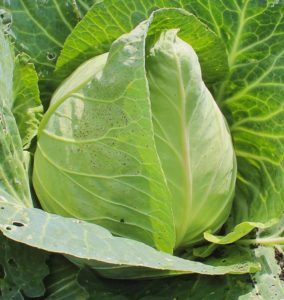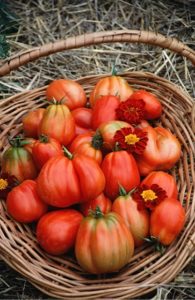In my life as a food grower I have always chosen heritage varieties of plants to grow. That’s because I want to be able to collect seeds from my plants for next year’s harvest. I believe that without seeds you are never really food secure, and by choosing open-pollinated varieties you can collect seeds from your garden whenever you need them.
Over the years, as my enthusiasm for producing food increased, I have also saved a lot of money by saving my own seeds.
There are many food plants that self-seed readily, so you only have to plant them once and they will reappear in your garden. I once admired a friend’s garden in May, brimming full of assorted garden greens. He told me that he had not planted them, they had all volunteered from plants grown the previous year. Parsley, kale, cilantro, spinach, chard, corn salad, cress, and arugula are all prolific self-seeders.
Volunteers are always the sturdiest most robust plants in the garden, as they grow in sync with the season. They are also adapted to the unique growing conditions in your garden, and should produce well.
As a novice seed saver it’s best to start with lettuce, peas, beans, tomatoes, peppers and eggplant. All these plants have perfect flowers, which means the male and female reproductive parts are in the same flower and they self-pollinate, requiring no assistance from wind or insects. Thus the chances of them crossing with other plants is negligible, and they will grow true to type in the next generation. Other plants such as corn and squash have separate male and female flowers and require insects or wind for pollination.
They require distances between them to prevent crossing.
This year I have decided to resurrect The Garden Path Nursery in Yellow Point so I am offering heritage food plants to local gardeners on the weekends throughout the month of May.
I think having a choice when buying plants for your food garden is an important thing in these uncertain times. Most of the seedlings offered for sale at garden centres, supermarkets and seed catalogues are hybrids, from which you cannot save seeds. They are not produced under organic conditions, which means they need to adjust if you are an organic gardener. Also, even though they are labelled ‘bee friendly’ during commercial production they are sprayed with neonicotinoid pesticides, a relatively new class of insecticide that affects the central nervous system of insects, resulting in paralysis and death.
Recent bans in Europe attest to the growing concerns surrounding pesticide use and honeybee decline.
By choosing heritage varieties you are partaking in the preservation of plant genetic diversity, just as our ancestors have done for ten thousand years. Many small seed businesses have now been gobbled up by large companies, who drop many of the open-pollinated lines from their listings. It’s not in a seed company’s interest to enable the gardener to save seeds. They want them to return every year to buy more seeds.
 I delight in knowing the history of the food plants growing in my garden. Early Jersey Wakefield Cabbage was introduced in the 1840’s in New Jersey and was listed in the Howe Sound seed catalogue in 1890. It is a reliable producer of 2-lb sweet and flavourful conical summer cabbages. Perfect for coleslaw, stir fries and sauerkraut.
I delight in knowing the history of the food plants growing in my garden. Early Jersey Wakefield Cabbage was introduced in the 1840’s in New Jersey and was listed in the Howe Sound seed catalogue in 1890. It is a reliable producer of 2-lb sweet and flavourful conical summer cabbages. Perfect for coleslaw, stir fries and sauerkraut.
 I have grown hundreds of tomato varieties from all around the world, including Moneymaker from the UK (1910) and San Marzano from Italy, grown as the pizza sauce tomato for over 100 years. ‘Tried and tested’ rings truer for me than ‘new and improved’. I now have my favourite dozen tomato varieties, which range in colour from red, rose, black to yellow, orange and greenstriped.
I have grown hundreds of tomato varieties from all around the world, including Moneymaker from the UK (1910) and San Marzano from Italy, grown as the pizza sauce tomato for over 100 years. ‘Tried and tested’ rings truer for me than ‘new and improved’. I now have my favourite dozen tomato varieties, which range in colour from red, rose, black to yellow, orange and greenstriped.
Plant some history in your garden this year and plan to save seeds for future harvests and to share with your community.
In next month’s column I will teach you the proper way to save tomato seeds.
 Carolyn Herriot is author of The Zero Mile Diet and The Zero Mile Diet Cookbook Available at your local bookstore.
Carolyn Herriot is author of The Zero Mile Diet and The Zero Mile Diet Cookbook Available at your local bookstore.
She grows IncrEdibles! in Yellow Point.
www.harbourpublishing.com/title/ZeroMileDiet
See all articles by Carolyn Herriot




Is the nursery open at anytime after May? Love to see it.
Hi there, are you open to sell fall vegetable starts?
Would love to buy them from you.
thank you very much
Thanks Carolyn for reminding me that hybrid seeds are not to saved, only the heritage.
Miss going to your Garden Path here in Victoria.
Wishing you success in YellowPoint.